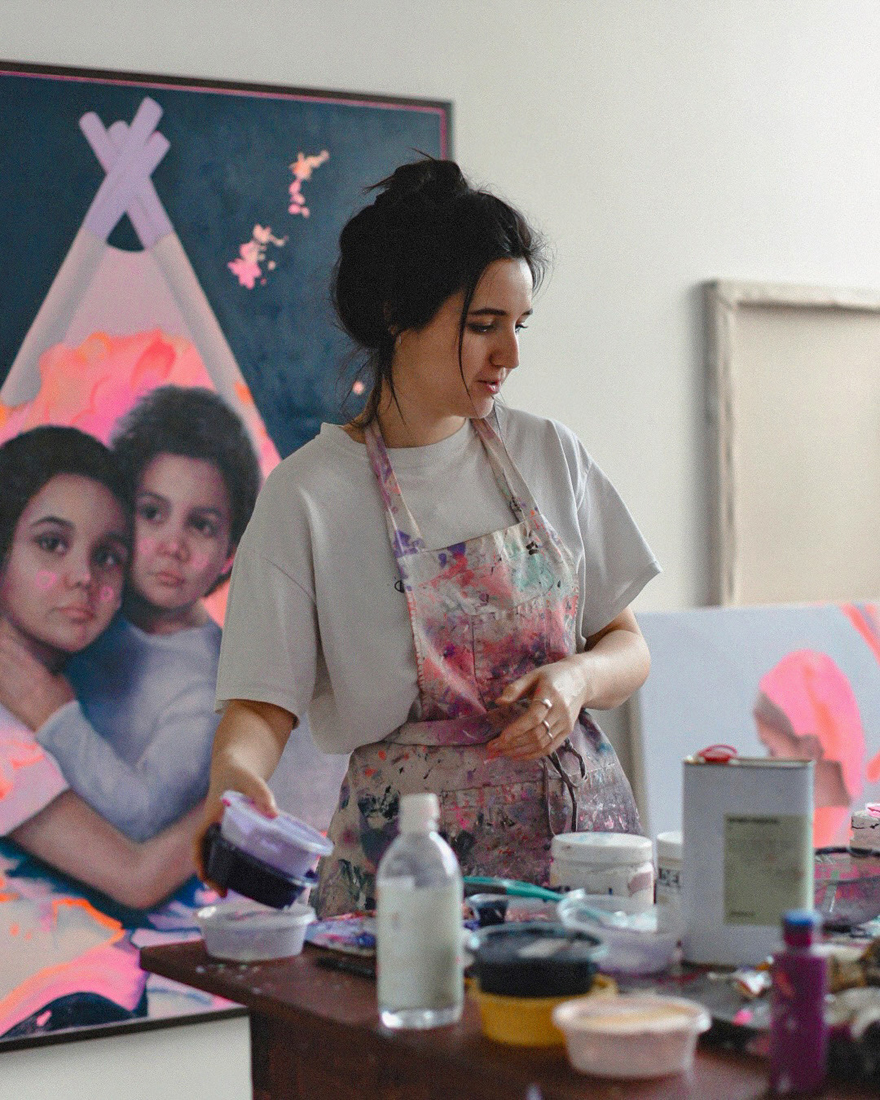What is your typical studio routine?
My routine varies depending on the project. When I get to the studio, it takes me a while to settle in; I put on music and clear the space from the day before. I’m usually waiting on paintings to dry between layers, so it’s good to have a few on the go. I paint for about an hour at a time, taking breaks to assess the work and drink too much coffee.
How do you describe your practice?
My paintings centre on childhood and family relationships, drawing inspiration from nostalgia and Renaissance art. I hope to convey a sense of surreal, dreamlike states and alternative realities through figurative and abstract elements, incorporating vibrant pastel colours and experimental mark-making techniques.
Is a particular process or methodology within your practice important to you?
I don’t follow a particular process or methodology. I tend to work chaotically, and I’m never quite sure how a painting will turn out until it’s finished. So when I’m in the studio, my main focus is on experimenting and having fun with my work rather than adhering to a strict set of rules. I prioritise creativity and spontaneity in my process, allowing myself to explore different possibilities. I try to tap into my intuition and let ideas flow naturally, allowing me to create personal work. I try to approach the painting with a sense of playfulness; this helps me stay engaged with my work and enjoy the creative process.
How long have you been working as an artist?
I’ve been painting pretty consistently since graduating in Fine art in 2016. Since then, I’ve been lucky enough to have held studio spaces and went full-time in 2019. I Joined QSS in September and have been mainly working on a body of paintings for an upcoming solo show. Returning to the studio environment over the past year has helped me find my feet again with my practice and create a better work/life balance.
Is it difficult being back in the studio after an exhibition?
I feel like a studio isn’t really a studio without work, so returning to an empty space can be strange after creating a body of paintings. Although it’s also a refreshing experience, allowing for stepping back and reflecting on the past project. I’m nervous and excited about the body of work I have leaving the studio in a few weeks. If it feels too soon to start painting after returning to the studio, I’ll take a break and focus on patching up the studio space and finding new sources of inspiration before exploring new ideas and developing new work.
What jobs have you done other than being an artist?
I’ve mostly worked in bars while painting during the day. Along the way, I had the opportunity to facilitate children’s painting classes, and I quickly realised just how much I could learn about creativity from them. Observing how children approach art with a vivid imagination and a lack of self-judgment was eye-opening. Seeing how these qualities could lead to incredibly original and creative artwork was so inspiring. Working with children helped me to appreciate the importance of embracing natural creativity and not being afraid to experiment and explore new ideas.
About Alana:
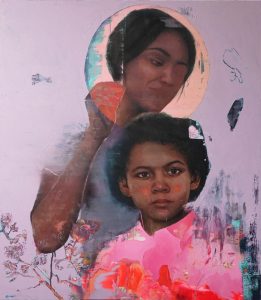
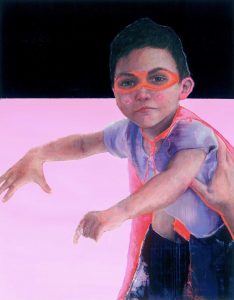
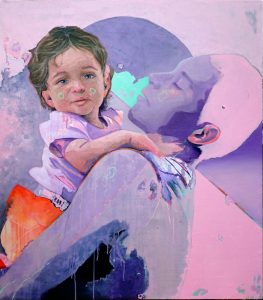
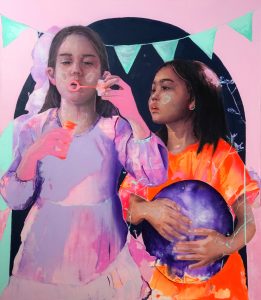
“Spellbound”, oil on canvas

